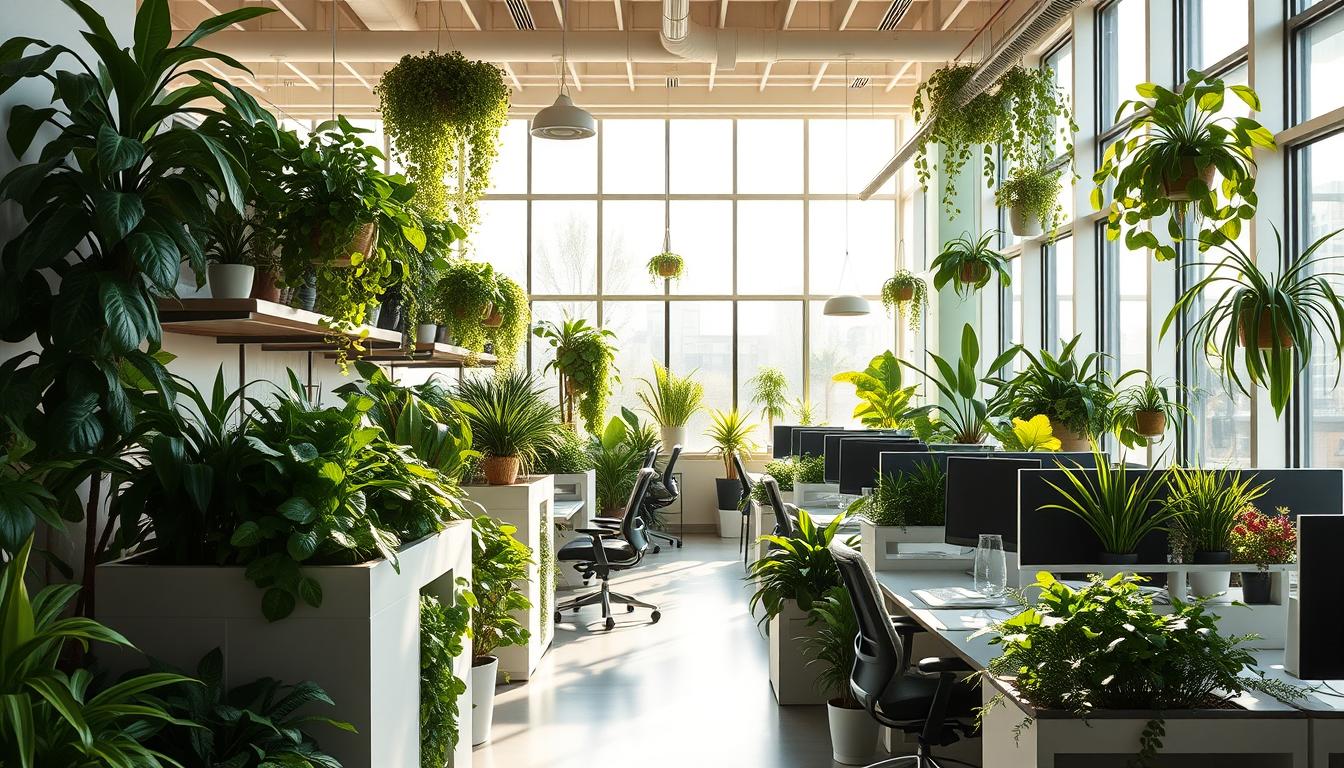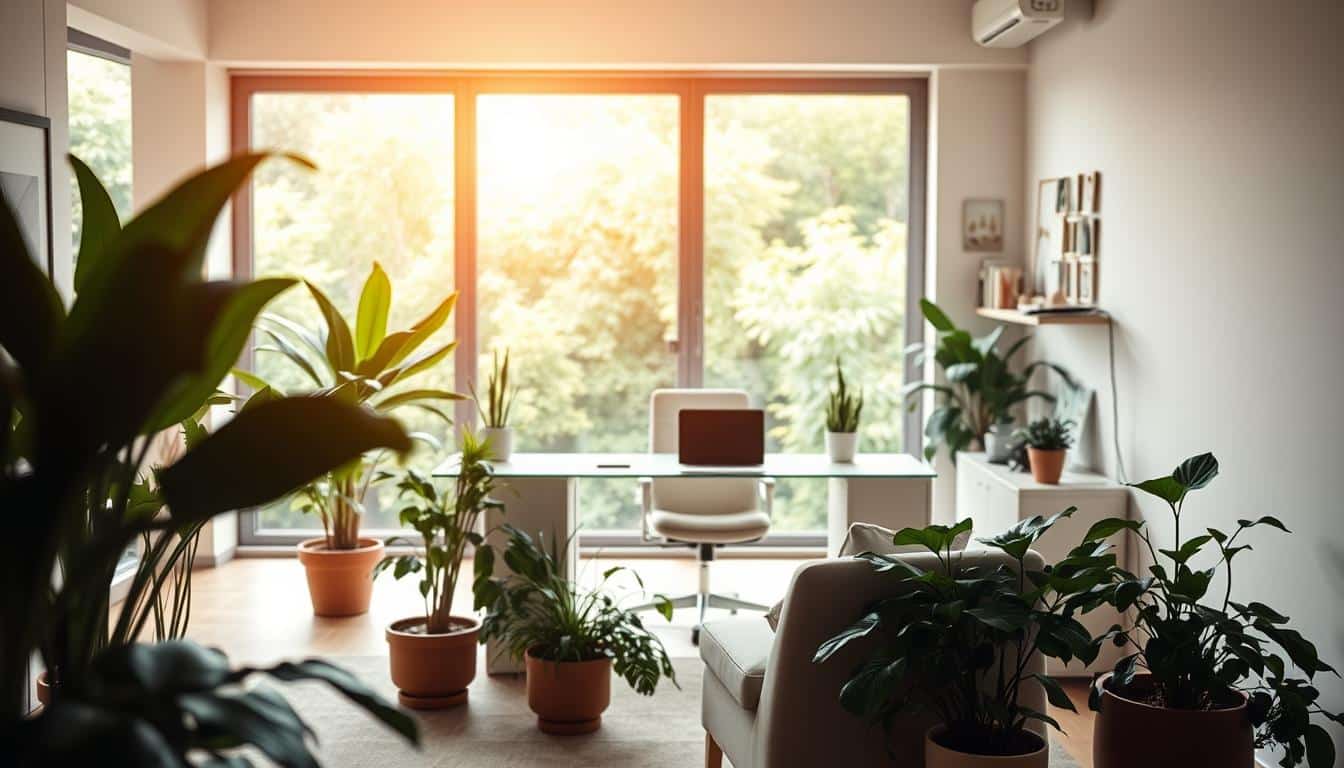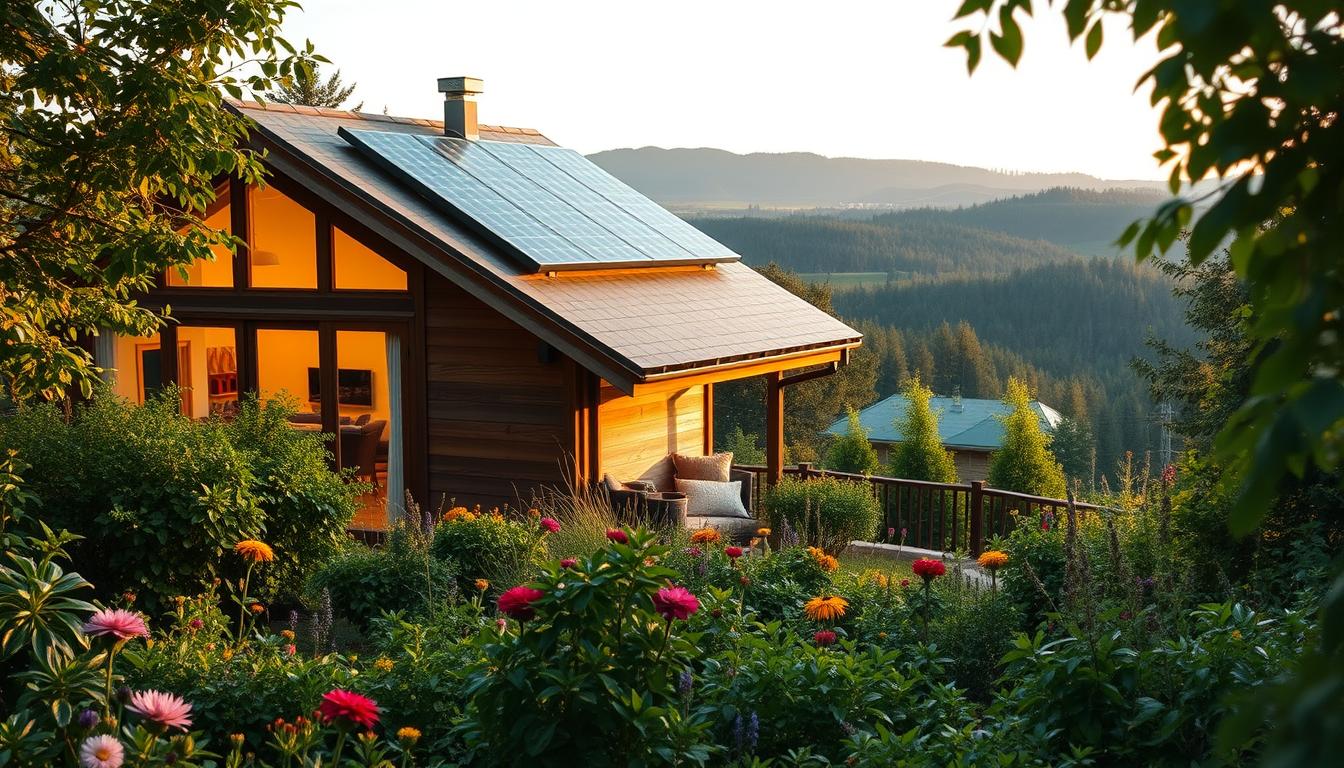In today’s fast-paced world, finding ways to feel better is crucial. Sensory wellness through biophilic cues is a fresh way to make our surroundings more calming, focused, and emotionally engaging. By adding elements of nature into our spaces, biophilic design becomes a strong way to connect more with our senses.
These nature-inspired features boost our mood and improve our health. This makes nature-filled environments vital for life today. Learn how this design idea can change how we interact with the world and make our sensory experiences richer.
Understanding Sensory Wellness
Sensory wellness involves the five senses working together: sight, sound, touch, smell, and taste. This teamwork between the senses greatly affects our feelings and mental health. They help us understand the world and make each experience in different places unique.
By understanding sensory wellness, designers can make spaces that make us feel good. For example, using natural light can improve our mood and make us comfortable. Adding calming sounds can also lessen stress, helping people in these spaces feel better.
Our senses play a huge part in our overall happiness. Paying attention to them can create a relaxing and refreshing atmosphere. This way, we can make places that are not just nice to look at but also support our mental strength.

The Importance of Multisensory Design
Multisensory design creates engaging and rich experiences. It uses all senses to connect with people on a deeper level. This approach makes spaces feel more alive, touching our sight, hearing, touch, smell, and taste.
It’s not just about looking good. Multisensory design makes us feel at ease, relaxed, and ready to work. Designers use sounds, sights, and textures to spark specific feelings. These make us happier and healthier, boosting both fun and efficiency.
At its core, multisensory design builds deep connections in spaces. It turns moments into memories, enhancing our moods and how we see our world.
What is Biophilic Design?
Biophilic design connects buildings to our natural love for nature. It uses light, plants, water, and natural materials to make us feel close to the outdoors. By doing this, people feel more in tune with their environment.
This approach makes spaces that make people feel good, helping both mind and body. A space based on biophilic design makes us comfortable and happy. It helps us feel like we belong there, boosting our health and mood.
How Sensory Wellness Via Biophilic Cues Can Transform Spaces
Biophilic cues are key to turning spaces into places that boost sensory wellness. By using design that focuses on nature, spaces become more than just useful. They become peaceful havens. Features like lots of natural light, natural textures, and calm sounds help create a relaxing atmosphere. This atmosphere helps clear the mind.
These natural elements make our daily lives better by improving our well-being. This happens in our homes and at work. Designers use biophilic cues not just to make spaces look good. They also create environments that are healthy. This makes shared areas better for everyone’s wellness.
Using sensory wellness ideas helps us connect with nature. This lets people clear and refresh their minds. Choosing biophilic design means aiming to make life better by improving our surroundings.
Engaging the Five Senses in Design
Designing immersive environments means thinking about the five senses. Careful choices in visuals, sounds, and textures can make user experiences better. Each part is key to creating a space that feels good and connects people.
Visual Elements: Lighting and Color
How we see a space greatly affects our interaction with it. Using natural light makes a space bright and feels cozy. Colors are also crucial. Soft blues and greens bring peace, while bright yellows add energy. With the right lights and colors, we stimulate the senses and improve mood.
Soundscapes: Nature’s Healing Sounds
Sounds play a big part in making us relax and focus. Adding natural sounds like water flowing or birds chirping helps calm us down. These sounds are good for our minds and make a space peaceful, boosting productivity and creativity.
Textural Variety: The Role of Touch
Adding different textures lets us physically connect with a space. Using materials such as soft fabrics, smooth stones, or woods offers a rich experience. These textures make a design feel more real and welcoming.
Creating Relaxation Through Olfactory Cues
Using smells is key to making a space more relaxing and emotionally uplifting. Scents like lavender and eucalyptus bring calmness. Adding them to a place can make both our minds and bodies feel better.
Blending these smells into natural designs makes a full sensory experience. Scents can change our mood and bring up old, cozy memories. Choosing the right fragrances helps people unwind and turn their space into a peaceful retreat.
By using scents wisely, designers can create spaces that touch our hearts. The right smells can link us to nature. They help us be mindful and find peace in our busy lives.
Incorporating Taste for Enhanced Experiences
Taste is key in creating unforgettable sensory wellness experiences. Adding taste to wellness spaces makes them more inviting and comfortable. Herbal teas and nutritious snacks help these spaces feel holistic and promote socializing.
Healthy refreshments do more than satisfy hunger. They match well with sensory wellness goals. They can lift spirits, make people happier, and enrich community vibes. Spaces shaped around taste draw people in and boost interaction with the environment.
Benefits of Biophilic Design on Well-being
Biophilic design brings nature into our living spaces. It has many advantages that make our lives better. This method boosts mental health by making environments that lower stress and better mood. Being close to nature helps people feel more balanced and calm.
It also improves our physical health a lot. Research shows that nature-filled spaces can lower blood pressure, make air cleaner, and encourage more exercise. When we add natural parts to our homes and work, we connect more with the world. This promotes a healthier way of living.
Another perk is better creativity and work output. Workers in nature-influenced areas feel happier and more able to bounce back from stress. Being around nature lifts mood and sparks new ideas and productivity. Using biophilic design can change our daily lives and enrich our well-being greatly.
Measuring the Impact of Sensory Wellness
To find out how sensory wellness helps, we mix numbers and people’s stories. This mix shows us the big benefits of wellness in different places.
We ask people about their feelings through surveys. Their stories tell us how adding sensory items to a space changes things for the better.
On the number side, businesses watch if work and health get better. This shows if sensory wellness really makes a difference, like less stress and happier workers.
These steps help those making spaces and company leaders make even better choices. Seeing the real gains from these efforts can make things better for everyone and help companies too.
Best Practices for Implementing Biophilic Cues
Adopting biophilic design means using best practices that make spaces welcoming for everyone. It involves using natural materials like wood and stone. These materials not only look good but also help us feel connected to the outdoors. They bring a sense of peace and warmth into any area.
Lighting is key in bringing out the beauty of biophilic elements. By letting in as much natural light as possible and choosing energy-saving lights, rooms feel more alive. Adding sounds like water trickling or wind chimes can make a space more relaxing.
Remember to include everyone when designing. Look at the space from many angles to ensure it works well for people with different needs and tastes. A design that considers everyone’s senses creates a place where all can feel at home.
- Incorporate natural elements like indoor plants to improve air quality.
- Design spaces that facilitate social interaction to build community connections.
- Use calming colors and textures to enhance comfort levels.
Sensory Wellness Via Biophilic Cues in Diverse Environments
Biophilic design greatly affects how we feel across many places. It matters in homes, busy offices, and quiet outdoor areas. Adding elements that remind us of nature makes us feel connected to the outside world. This connection betters our well-being and makes spaces work better.
In homes, using things like wood and having plants and sunlight can make us happier and more relaxed. Offices get a boost from biophilic design too, making places where people can work well and feel less stress. Places like parks and libraries can draw in people with ways that make them enjoy being there more.
- Residential Design: Use natural light and indoor plants to create calming environments.
- Workspaces: Implement soundscapes that include nature sounds to facilitate focus and creativity.
- Public Areas: Design green spaces that encourage interaction and relaxation among community members.
The way biophilic design is used can change based on what each space needs. By smartly mixing different natural elements, places can offer a wide range of experiences that touch all our senses. This is what truly brings the idea of sensory wellness to life.
Conclusion
Exploring sensory wellness through nature in design shows how it can change our well-being for the better. Using elements that appeal to our senses makes spaces look good and feel good. They help our health and happiness.
This point stresses how crucial it is to design areas that connect us more to nature. By using biophilic design, creators can hugely improve our lives. This is especially true in cities, where we often miss nature.
The way forward for design focuses on our sensory health. As designers keep coming up with new ideas, using natural cues will become key. These elements will help create spaces that care for, excite, and boost our well-being.



